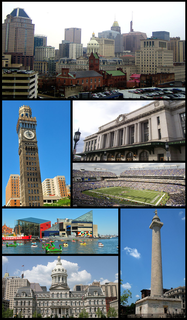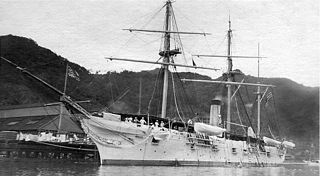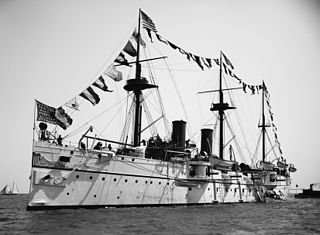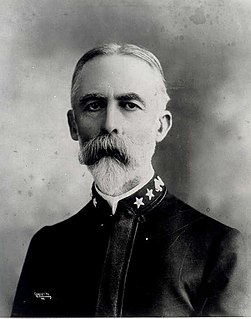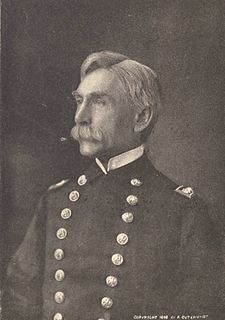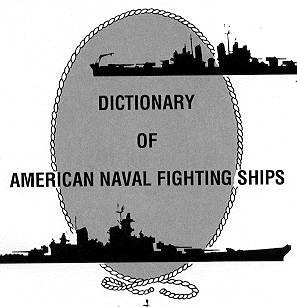| Richard Phillips Leary | |
|---|---|
 Late 1800s illustration of Leary | |
| Born | November 3, 1842 Baltimore, Maryland |
| Died | December 27, 1901 (aged 59) Chelsea, Massachusetts |
| Allegiance | |
| Service/ | |
| Years of service | 1860–1901 |
| Rank | Rear Admiral |
| Commands held | USS Adams USS San Francisco Naval Governor of Guam |
| Battles/wars | American Civil War Spanish–American War |
Richard Phillips Leary (3 November 1842 – 27 December 1901) was an admiral in the United States Navy who served from the American Civil War through the Spanish–American War.
Admiral is one of the highest ranks in some navies, and in many navies is the highest rank. It is usually abbreviated to "Adm" or "ADM". The rank is generally thought to have originated in Sicily from a conflation of Arabic: أمير البحر, amīr al-baḥr, "commander of the sea", with Latin admirabilis ("admirable") or admiratus ("admired"), although alternative etymologies derive the word directly from Latin, or from the Turkish military and naval rank miralay. The French version – amiral without the additional d – tends to add evidence for the Arab origin.

The United States Navy (USN) is the naval warfare service branch of the United States Armed Forces and one of the seven uniformed services of the United States. It is the largest and most capable navy in the world, with the highest combined battle fleet tonnage and the world's largest aircraft carrier fleet, with eleven in service, and two new carriers under construction. With 319,421 personnel on active duty and 99,616 in the Ready Reserve, the Navy is the third largest of the service branches. It has 282 deployable combat vessels and more than 3,700 operational aircraft as of March 2018, making it the second largest and second most powerful air force in the world.

The American Civil War was a war fought in the United States from 1861 to 1865, between the North and the South. The Civil War is the most studied and written about episode in U.S. history. Primarily as a result of the long-standing controversy over the enslavement of black people, war broke out in April 1861 when secessionist forces attacked Fort Sumter in South Carolina shortly after Abraham Lincoln had been inaugurated as the President of the United States. The loyalists of the Union in the North proclaimed support for the Constitution. They faced secessionists of the Confederate States in the South, who advocated for states' rights to uphold slavery.
